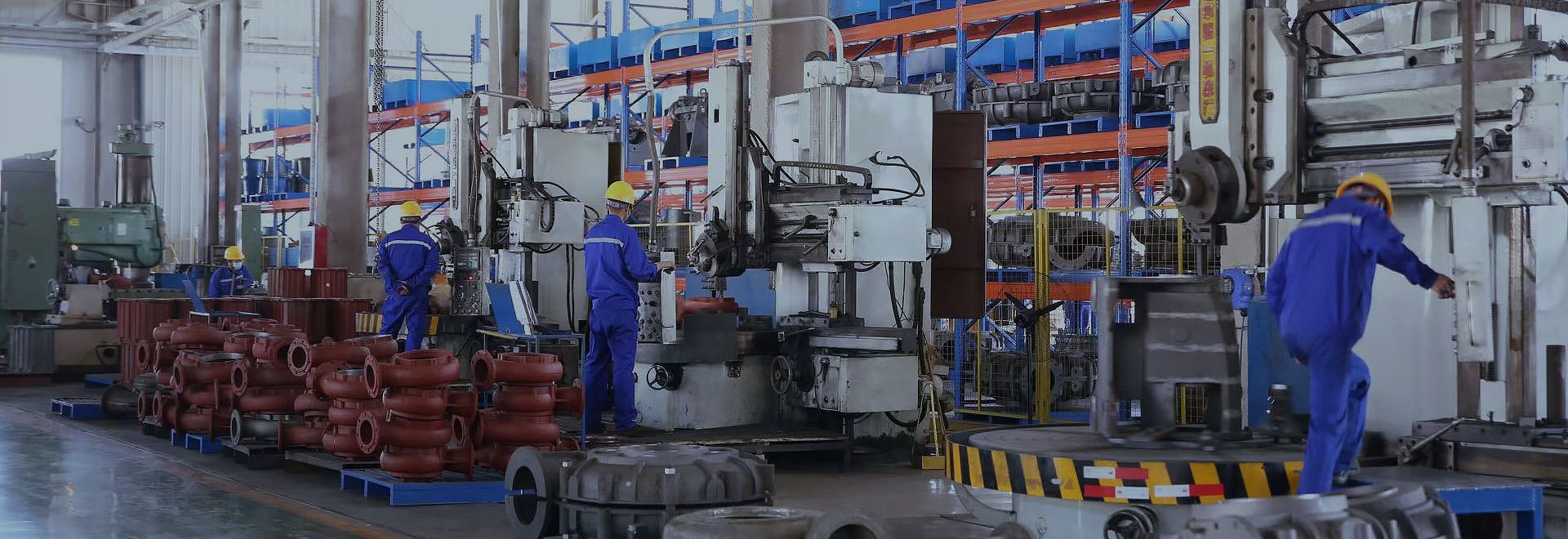Wear law of slurry pump impeller
Published:
Jan 20,2025

To understand the wear patterns of slurry pump impellers, we first need to understand the changes in the motion trajectory of the slurry after it enters the impeller.
We know that when the slurry flows into the impeller, the direction of motion of the solid particles in the slurry will change from axial to radial.
Under the action of centrifugal force, most of the solid particles will move towards the periphery, and the concentration of solid particles will also produce a new distribution, resulting in much greater wear on the rear cover plate of the impeller than on the front cover plate, especially at the intersection of the blade inlet edge and the rear cover plate.
Since the sizes of solid particles entering the slurry pump are different, the smaller solid particles will have correspondingly smaller inertial forces.
Of course, the wear life of the slurry pump is greatly related to the selection and design of the slurry pump.
1. Impact of small solid particles on wear
When small solid particles enter the pump body, they have a certain pre-rotation similar to liquid particles, and the direction of the solid particles is the same as that of the impeller, so the small solid particles do not have a large impact velocity on the blade inlet edge, and the wear on the blades is not significant.
In the pump body, the centrifugal force on small solid particles is very small, so in the flow channel, their motion trajectory will always be close to the working surface of the blades.
The curvature of the particle's motion is not much different from the circumferential curvature of the blades.
When solid particles flow out of the blade passage, the radial velocity and flow angle of the small solid particles are both very small.
Therefore, when the slurry pump is working, both the working surface of the pump blades and the outlet edge will be subjected to wear from small solid particles, and observations show that the wear on the outlet edge is even more severe.
2. Impact of large solid particles
Large solid particles have greater inertial forces. When these solid particles enter the pump body, they do not have a pre-rotation similar to liquid particles. Under the effect of rotation, they will impact the blade inlet edge at various angles, causing most of the particles to collide with the inlet edge, resulting in some solid particles being pushed to the back of the blades.
Similarly, when large particles enter the pump body, due to the large centrifugal force, large solid particles will detach from the working surface of the blades.
The curvature of particle motion will naturally differ significantly from the circumferential curvature of the blades, leading to more intense impacts on the blade passage. When particles reach the blade outlet, large solid particles also have a significant radial velocity and a large flow angle.
It can be seen that large solid particles cause severe wear on the pump body, resulting in serious wear from the blade inlet to the blade outlet. Additionally, since some solid particles are pushed to the back of the blades, this also causes some wear on the back of the blades.
Through experiments, we can find that the wear trend of solid particles on the blades is that the wear position moves from the front edge of the blade towards the rear edge, and significant wear occurs at the rear edge, which is more severe than at the front edge.
Moreover, the working surface of the blades experiences more severe wear due to the friction and impact of particles compared to the back of the blades.
There are many models of slurry pumps, and the impellers of each slurry pump product are not the same, but the wear mechanism is almost the same. To understand the wear patterns of slurry pump impellers, we first need to understand the changes in the motion trajectory of the slurry after it enters the impeller.
We know that when the slurry flows into the impeller, the direction of motion of the solid particles in the slurry will change from axial to radial.
Under the action of centrifugal force, most of the solid particles will move towards the periphery, and the concentration of solid particles will also produce a new distribution, resulting in much greater wear on the rear cover plate of the impeller than on the front cover plate, especially at the intersection of the blade inlet edge and the rear cover plate.
Since the sizes of solid particles entering the slurry pump are different, the smaller solid particles will have correspondingly smaller inertial forces.
Of course, the wear life of the slurry pump is greatly related to the selection and design of the slurry pump.
1. Impact of small solid particles on wear
When small solid particles enter the pump body, they have a certain pre-rotation similar to liquid particles, and the direction of the solid particles is the same as that of the impeller, so the small solid particles do not have a large impact velocity on the blade inlet edge, and the wear on the blades is not significant.
In the pump body, the centrifugal force on small solid particles is very small, so in the flow channel, their motion trajectory will always be close to the working surface of the blades.
The curvature of the particle's motion is not much different from the circumferential curvature of the blades.
When solid particles flow out of the blade passage, the radial velocity and flow angle of the small solid particles are both very small.
Therefore, when the slurry pump is working, both the working surface of the pump blades and the outlet edge will be subjected to wear from small solid particles, and observations show that the wear on the outlet edge is even more severe.
2. Impact of large solid particles
Large solid particles have greater inertial forces. When these solid particles enter the pump body, they do not have a pre-rotation similar to liquid particles. Under the effect of rotation, they will impact the blade inlet edge at various angles, causing most of the particles to collide with the inlet edge, resulting in some solid particles being pushed to the back of the blades.
Similarly, when large particles enter the pump body, due to the large centrifugal force, large solid particles will detach from the working surface of the blades.
The curvature of particle motion will naturally differ significantly from the circumferential curvature of the blades, leading to more intense impacts on the blade passage. When particles reach the blade outlet, large solid particles also have a significant radial velocity and a large flow angle.
It can be seen that large solid particles cause severe wear on the pump body, resulting in serious wear from the blade inlet to the blade outlet. Additionally, since some solid particles are pushed to the back of the blades, this also causes some wear on the back of the blades.
Through experiments, we can find that the wear trend of solid particles on the blades is that the wear position moves from the front edge of the blade towards the rear edge, and significant wear occurs at the rear edge, which is more severe than at the front edge.
Moreover, the working surface of the blades experiences more severe wear due to the friction and impact of particles compared to the back of the blades.
There are many models of slurry pumps, and the impellers of each slurry pump product are not the same, but the wear mechanism is almost the same.
Keyword:
Slurry Pump
SHANGLISHI PUMP GROUP
Department Director: Ms. Wang
Tel: +86-311-82725800/82725629
Email: admin@sls-pump.com
WhatsApp: +86 15830676372
Mobile Website

Mobile Website
Copyright © 2022 SHANGLISHI PUMP GROUP


